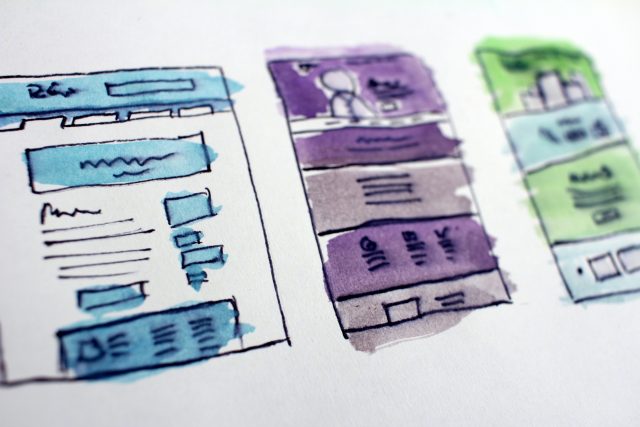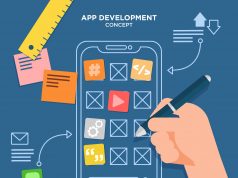In the fast-paced digital landscape of today’s business world, creating a memorable and seamless online presence has become a paramount concern for businesses of all sizes. For small businesses in America, the significance of User Interface (UI) and User Experience (UX) design cannot be overstated. With consumers increasingly turning to the internet to discover, engage, and transact, the effectiveness of a small business’s digital interface plays a pivotal role in shaping customer perceptions and driving success. In this discourse, we delve into the critical role that UI/UX design plays in empowering small businesses across America to stand out, connect, and flourish in the competitive digital marketplace. From enhancing customer satisfaction to fostering brand loyalty, this exploration illuminates the undeniable importance of crafting a thoughtful and user-centric digital experience tailored to the unique needs and aspirations of small businesses.
Interesting Facts on UI/UX Design
UI/UX design is a fascinating field with intriguing facts that highlight its importance and impact on user experiences. Here are some interesting insights:
- UI/UX design is not just about making things look pretty. It’s about making things easy to use and enjoyable.
- Good UI/UX design can increase conversion rates by up to 400%.
- A one-second delay in page response results in a 7% reduction in conversions.
- 75% of users will abandon a website if they have a negative experience.
- The human brain can process images 60,000 times faster than text.
- Color psychology can be used to influence user behavior.
- The font you use can also affect user experience.
- The layout of your website or app is also important.
- UI/UX design is an ongoing process.
What Is UI Design?
User Interface (UI) design refers to creating visually appealing and user-friendly digital interfaces that enable effective interactions between users and technology. UI designers focus on designing the look and feel of digital products, ensuring that they are visually appealing, intuitive to use, and aligned with the overall user experience
What is UX Design?
UX Design is about crafting digital experiences that prioritize user needs and preferences. It involves research, organizing content, creating prototypes, testing usability, and refining designs. The goal is to make digital interfaces intuitive, visually appealing, and efficient, leading to satisfied users and successful outcomes.
What’s the difference between UX and UI design?
User Experience (UX) design and User Interface (UI) design are vital elements in the creation of user-friendly digital products. While closely related, they serve distinct roles in shaping user satisfaction and interaction.
UX design centers on the overall user experience. It involves understanding user behavior through research and creating personas to represent different user types. UX designers focus on optimizing product functionality and accessibility by developing wireframes and prototypes. They conduct usability testing to refine the user journey, ensuring a seamless and meaningful experience.
Conversely, UI design concentrates on the visual and interactive aspects of the product. UI designers craft the product’s aesthetic elements, including layout, colors, typography, and icons. They maintain consistency to provide a cohesive look and feel, employing visual cues to guide users intuitively through the interface.
Collaboration between UX and UI design is essential. Insights from UX research guide UI design choices, enhancing usability. Effective UI design enhances the product’s visual appeal and user-friendliness, contributing to an overall positive experience.
In essence, while UX design optimizes user journeys and addresses user needs, UI design focuses on creating visually appealing and intuitive interfaces. Together, they create a harmonious user experience that fosters engagement and satisfaction.

UI UX Designing
Why startups in the USA need to focus on UI/UX
In the dynamic landscape of startups, where innovation and differentiation are paramount, prioritizing user interface (UI) and user experience (UX) design is no longer optional – it’s a strategic imperative. These design aspects hold the potential to shape the trajectory of a startup’s success by enhancing user satisfaction, fostering engagement, and building brand loyalty. Here’s a closer look at why startups need to place UI/UX at the forefront of their business strategies:
User-Centric Approach Drives Success:
Startups that focus on UI/UX design are inherently customer-focused. By understanding their target audience’s needs, behaviors, and pain points, startups can tailor their products or services to deliver a more meaningful experience. This user-centric approach not only enhances customer satisfaction but also increases the likelihood of user retention and positive word-of-mouth referrals.First Impressions Matter:
In today’s digital age, a startup’s digital presence often serves as the initial point of contact with potential customers. A well-designed and intuitive UI/UX can create a positive first impression, instilling confidence and credibility in the minds of users. Conversely, a poor UI/UX experience can result in users quickly moving on to competitors.Competitive Edge in a Crowded Market:
The startup landscape is highly competitive, with numerous players vying for attention. A well-thought-out UI/UX design sets a startup apart by providing a seamless and enjoyable experience. It creates a competitive edge that goes beyond the core offering, influencing users’ perceptions and building brand loyalty.Enhanced Engagement and Conversion:
A fluid and user-friendly interface encourages users to engage more deeply with a startup’s product or service. When the user journey is intuitive, users are more likely to explore, interact, and convert – whether that means making a purchase, signing up, or subscribing.Iterative Improvement through Data Insights:
Effective UI/UX design doesn’t end with the launch of a product. Startups can leverage data analytics to gain insights into user behaviors and preferences. This data-driven approach allows for continuous improvement, enabling startups to refine their design and enhance the user experience over time.Cost-Effectiveness in the Long Run:
Investing in UI/UX design upfront might seem like an additional expense, but it’s a strategic investment that yields long-term benefits. By identifying and addressing design flaws early on, startups can prevent costly fixes down the road and reduce the risk of user dissatisfaction.Brand Loyalty and Advocacy:
Positive user experiences lead to loyal customers who not only stick around but also become brand advocates. When users have enjoyable interactions with a startup’s product, they’re more likely to share their positive experiences with friends, and family, and on social media, effectively becoming unpaid promoters.

Key Components of UI/UX Design
- User Research and Analysis: Understanding user preferences and behaviors.
- Information Architecture: Organizing content for easy navigation.
- Visual Design: Consistent and engaging visual elements.
- Interaction Design: Creating intuitive user interactions.
- Usability Testing and Iteration: Regular testing and improvement based on user feedback.
Conclusion
In the competitive landscape of American small businesses, UI/UX design holds immense significance. It shapes the way customers perceive and interact with products and services. A thoughtfully crafted UI/UX can elevate a small business’s online presence, fostering positive user experiences that translate to customer loyalty and increased conversions. By investing in intuitive navigation, appealing visuals, and seamless interactions, small businesses can build credibility and stand out in a crowded market. As user expectations evolve, embracing the importance of UI/UX design becomes not just a choice, but a strategic necessity for small businesses aiming to thrive and grow in the digital era.


















